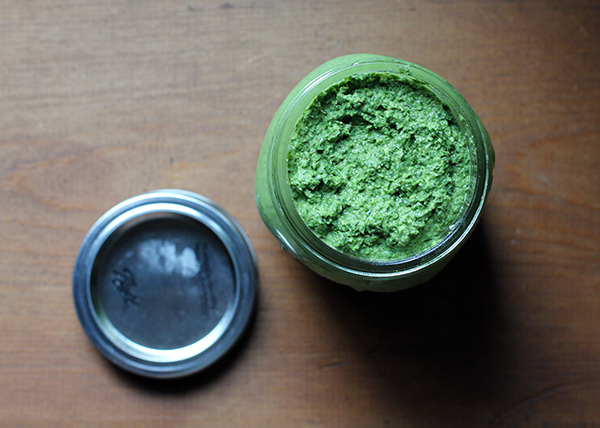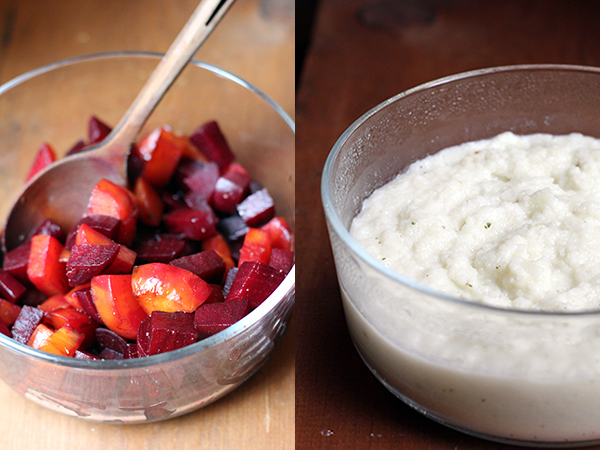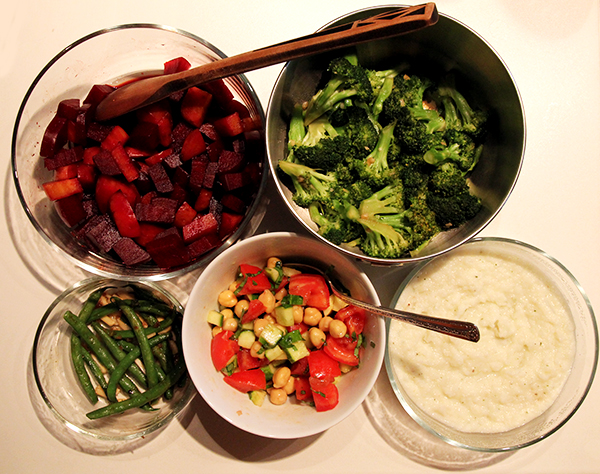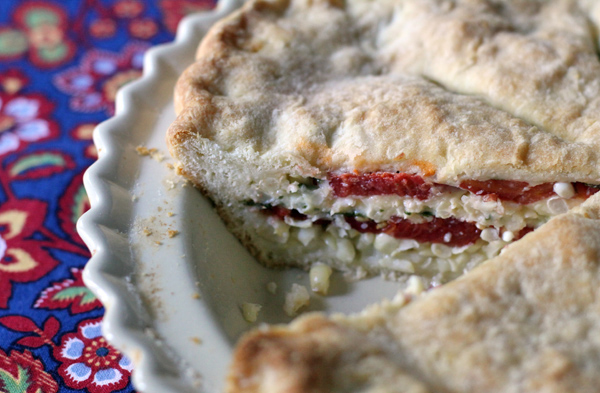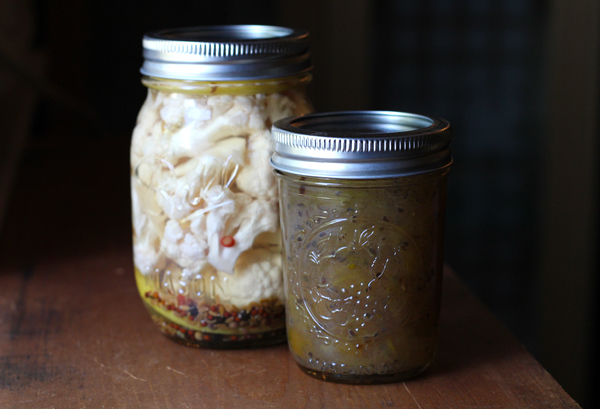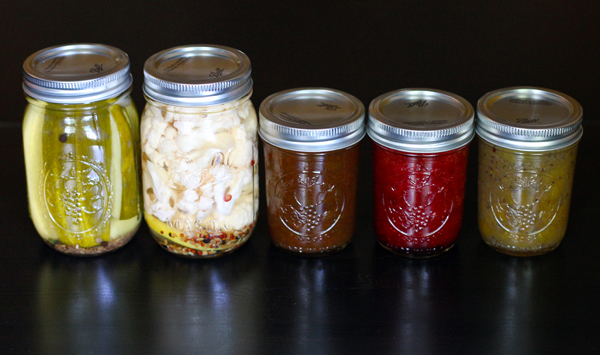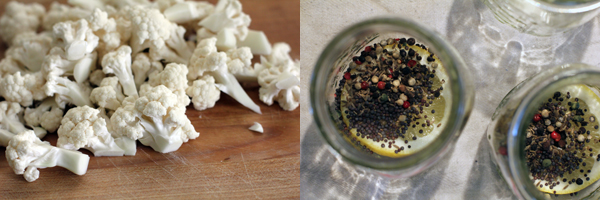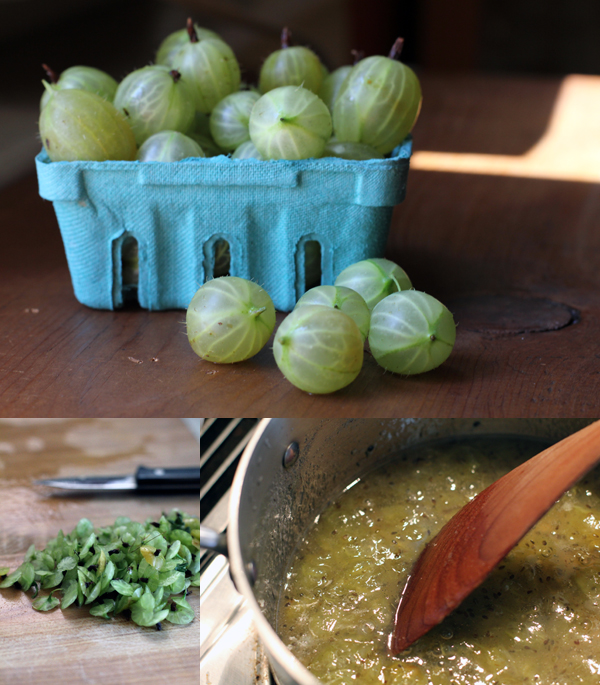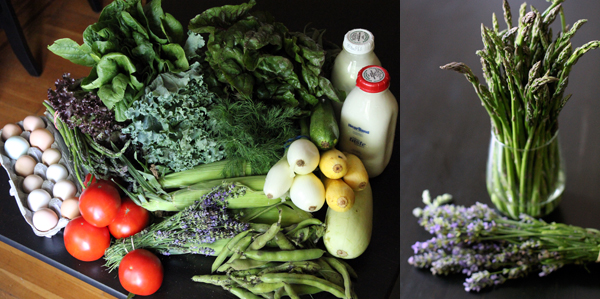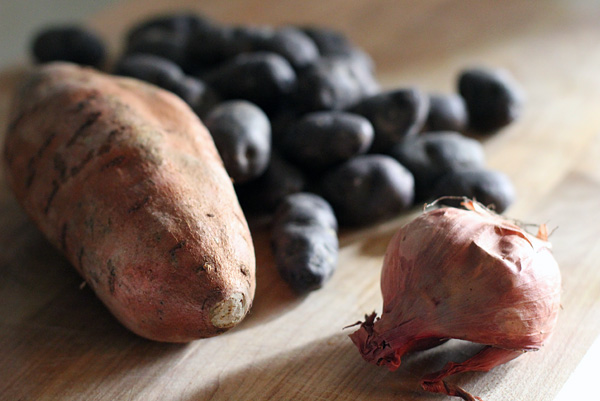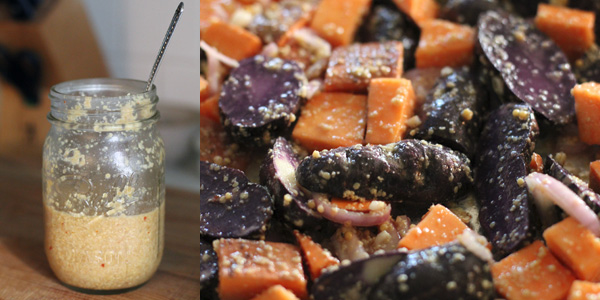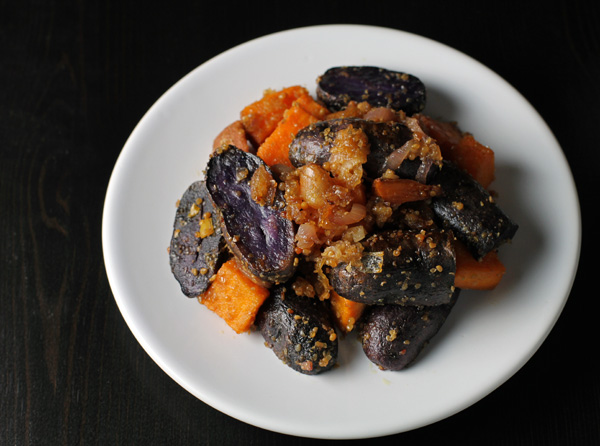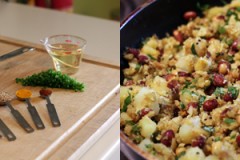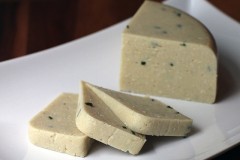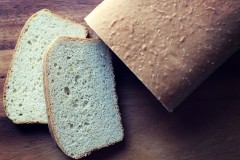I may have grown up amid Ohio’s horizon-filling corn fields, with tomatoes piled high at every farmer’s stand we passed, but I had never tasted the Southern treat that is tomato corn pie until a few years ago. Since that revelatory time, however, it has become the dish that announces “Summer!” in our kitchen (and celebrates its bounty a few times more throughout the season).

Despite all that, somehow it has never ended up detailed here in Wonderland. I think I get distracted. There’s that weekend when I arrive at the market and see that the stall at the end has a pickup bed backed in and filled with ears of corn, and that the man who’s been selling the fresh spring peas has now traded them for bushels of the reddest, ripest fruit. I get a little dizzy. Apparently, I don’t come to again until the pie is baked and eaten. Apparently, I don’t consider sharing.
And it also has to do with the fact that a small army of writers have already blogged their way through the Gourmet recipe and posted all about how awesome this pie is, so it has always seemed silly to add to the noise about it. There are plenty of variations out there now as well: tomatoes roasted, a crust spiked with this seasoning or that one. The fact that I am extra generous with the filling–mounding up the corn and tomato slices and going extra hard with the basil–hardly seemed worth reporting.
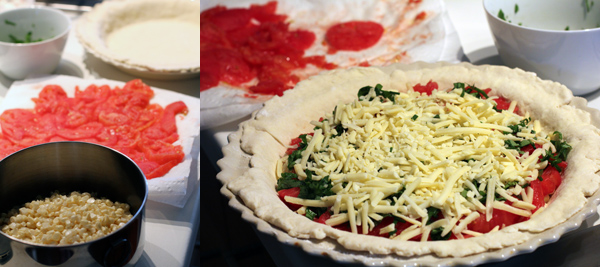
Once, however, I did read a post in which a cook expressed extreme displeasure in the finished dish. It was all wrong, she wrote, and I was weirdly crestfallen over this, that my favorite pie wasn’t universally loved. She disliked the crust (“But it’s a delicious, buttery biscuit!” I shouted at the computer screen). It was then that she really drew down on my thick slices of heaven and blamed the mayo.
Now, I have heard of these strange beasts, people who feel about mayonnaise the way others react to cilantro–with an innate disgust that deeply confuses the camp of addicted fans. Being both Team Mayo and Team Cilantro myself, I usually take a shoulder-shrugging “more for me” stance in the face of these expressed tastes. But the first tomato corn pie of 2012 has changed all that. I got home with my produce, shucked my corn, peeled and seeded and squeezed and blotted my tomatoes, chopped my herbs, whipped my mayo and lemon, shredded my cheese, and mixed the most lovely biscuit crust of my career. I assembled it all, crimping the edges and, yes, gloating already about how lovely it all was when I chanced to look over and see that the measuring cup full of the lemony mayo dressing was still sitting there, on the wrong side of my pie.
Unkind thoughts were mentally expressed. Also, I learned that you cannot, no matter how much you might desire to, pour the dressing in through the top crust vents. Just a little FYI.
So, I tossed the sauce into the ‘fridge and the pie into the oven, counted it as a lesson in humility, and tried to move on. When I took a bite of the baked pie, however, I discovered that I just might have stumbled onto something. First, for all the “mayo is gross” sayers in the crowd, this pie is tasty–not as tasty!!–but still plenty good sans the condiment. When made correctly, however, this recipe has a tendency to soak through its bottom crust no matter how vicious you get with the draining and blotting of all the sweet juices out of the tomatoes. This time, I cut and was rewarded with a perfectly platable slice–even the first piece popped right out of the dish with barely a chip in the bottom crust. I drizzled a bit of the unintentionally reserved dressing over the top like some kind of icing. I think this just might become a thing.
So make your own tomato corn pie, with or without mayo. No need to do anything but slice off the corn kernels, in my opinion, but definitely peel and seed and squeeze and blot those tomatoes.
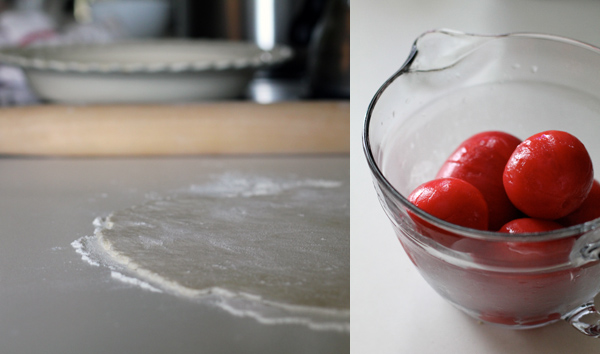
Savory Tomato Corn Pie
as seen across the internet, most traceable back to Gourmet
For the crust
2 cups all-purpose flour
1 tablespoon baking powder
1 teaspoons kosher salt
6 T cold unsalted butter
3/4 cup whole milk
For the filling
4 large, meaty tomatoes, peeled, cored and sliced crosswise, drained of their juices
3 ears of corn
3 T finely chopped basil
1 T finely chopped chives
2 cups sharp cheddar, grated
pepper
1/3 cup mayonnaise
2 T fresh lemon juice
1 T butter, melted, for brushing the top crust
Prepare the tomatoes by cutting a shallow X in the bottom of each and dunking then in a boiling water for 10 seconds, then submerging them in ice water. The skins should easily peel off at this point, sticking only if there are imperfections in the fruit. Slice and squeeze gently, discarding liquid and seeds. I like to begin with this step so that I can lay out the slices out on paper towels and get as much drainage time as possible.
Whisk flour, baking powder, and salt together in a medium-sized bowl. Add 6 T butter in small cubes and, using with a pastry cutter or your preferred method, work the butter into the dry ingredients. When the mixture resembles a coarse meal, add the milk and mix just until all ingredients are incorporated. Divide roughly in half (I add just a touch more weight to what will become my bottom crust and wrap in plastic. I like to flatten the dough into rough discs and refrigerate until ready to roll out.
Cut the corn off the cobs and roughly chop. Prepare the cheese, whisk the mayo and lemon dressing together, and chop the herbs.
When ready to assemble the pie, heat the oven to 400F.
Unwrap one of the dough pieces and place on a well-floured counter. Flour the top of the dough as well and roll out to fit your 9-inch pie plate. Working in batches, place half the sum total of each–corn, tomato slices, herbs, and cheese–in the shell and then repeat. Finish by drizzling the mayo dressing over the filling (though you may omit this step if you absolutely must). Roll out the top crust and seal the edges. Slice vents in the top and brush with the melted butter. Bake for 30 minutes or until golden.


